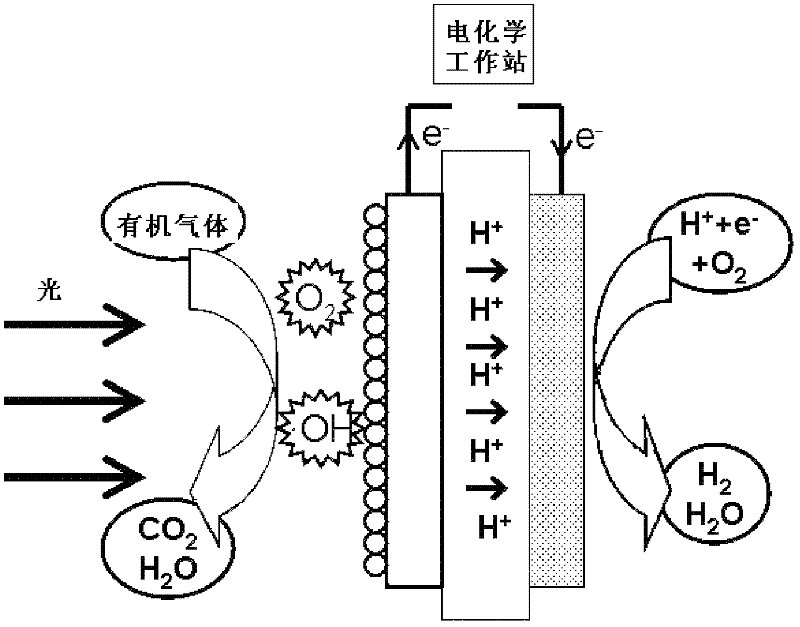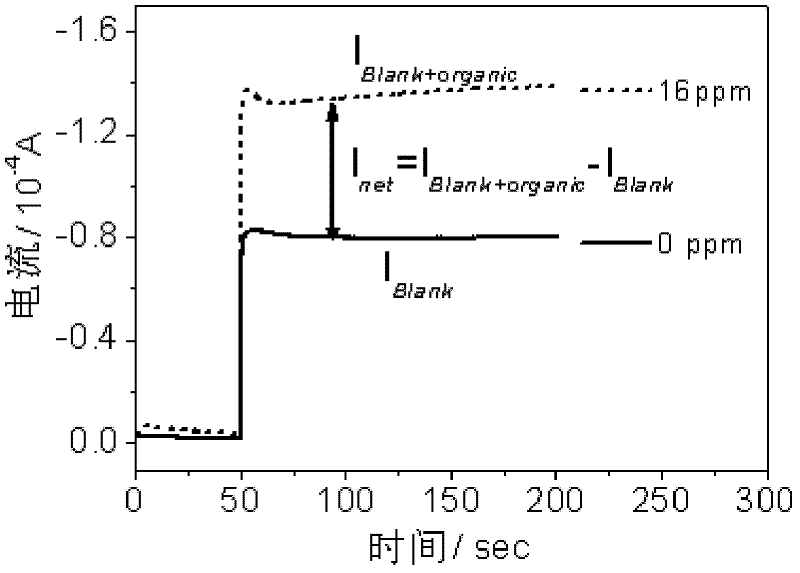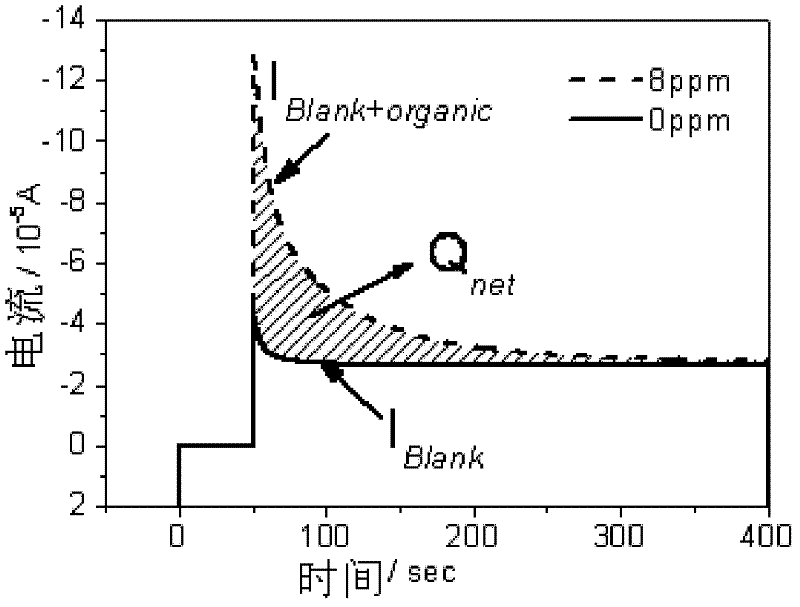Method for determining total concentration of organic gas in environmental gas by photocatalytic fuel cell (PFC) photoelectrocatalysis method
An organic gas and ambient gas technology, applied in the direction of electrochemical variables of materials, etc., can solve the problems of long time, complicated operation, insufficient detection range to cover TVOC components, etc., to achieve the effect of no secondary pollution and short measurement time.
- Summary
- Abstract
- Description
- Claims
- Application Information
AI Technical Summary
Problems solved by technology
Method used
Image
Examples
preparation example Construction
[0071] 1. Preparation of PFC three-in-one electrode:
[0072] The PFC three-in-one electrode includes three parts: a photoanode 21 , a proton exchange membrane 22 and a cathode 23 , and the proton exchange membrane 22 is located between the photoanode 21 and the cathode 23 . The photoanode 21 can be prepared by preparing a photocatalyst nano-film on the photoanode carrier, and the photoanode carrier can be a sheet-like or mesh-shaped porous and proton-permeable material, such as a perforated titanium plate, a conductive nickel mesh, carbon fiber cloth or Carbon paper and other materials. The cathode 23 is mainly prepared by loading a Pt / C catalyst on a conductive porous material, or directly using an electrode with good and stable conductivity such as a platinum sheet or a nickel mesh. The proton exchange membrane 22 needs to be pretreated to selectively pass protons. Then, the photoanode 21, the proton exchange membrane 22 and the cathode 23 are subjected to hot-pressing tr...
PUM
| Property | Measurement | Unit |
|---|---|---|
| thickness | aaaaa | aaaaa |
| thickness | aaaaa | aaaaa |
Abstract
Description
Claims
Application Information
 Login to View More
Login to View More - R&D
- Intellectual Property
- Life Sciences
- Materials
- Tech Scout
- Unparalleled Data Quality
- Higher Quality Content
- 60% Fewer Hallucinations
Browse by: Latest US Patents, China's latest patents, Technical Efficacy Thesaurus, Application Domain, Technology Topic, Popular Technical Reports.
© 2025 PatSnap. All rights reserved.Legal|Privacy policy|Modern Slavery Act Transparency Statement|Sitemap|About US| Contact US: help@patsnap.com



